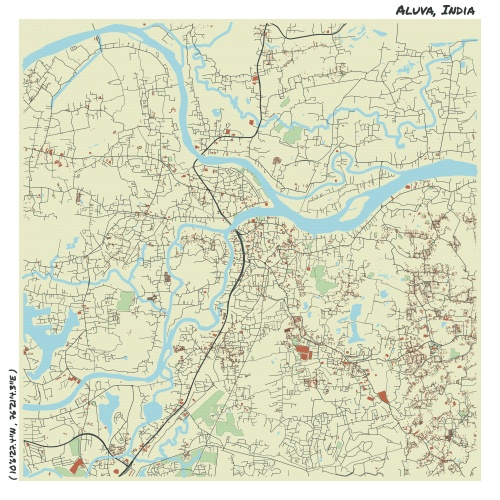Understand
Aluva, a town in Kerala, India, is a place of significant historical and cultural importance. Situated on the banks of the Periyar River, the town is divided into two halves: the commercial town on the southern side and residential areas on the northern side. The Shiva Temple, located on the river banks, is a major attraction due to its rich traditions and legendary stories. During the monsoon season, the temple gets submerged under the river, adding to its mystical allure. The town holds historical value as it played a crucial role in the defense of the Travancore-Kochi Kingdoms against external aggressions. The Northern side of Aluva became famous for its formidable Nedumkotta lines, while the Southern side turned into a bustling commercial port. Aluva witnessed significant growth and development when Maharaja Chitra Thirunal initiated an industrialization program in the 1930s. This led to the establishment of numerous industries, making it a prominent industrial belt in Kerala. After independence, Aluva merged into a single municipality and became part of the Ernakulam district. The town experienced further economic growth with the establishment of the Federal Bank's headquarters and the entry of other financial institutions. In 1990, Aluva became part of the Greater Kochi Area, solidifying its position as a satellite town of Kochi and contributing to the overall development of the region. Aluva is a place where history and progress merge, offering a unique experience for visitors.
Get in
Aluva, a beautiful town in India, is easily accessible by air, road, and rail from all parts of the country. Whether you prefer to fly, drive, or take the train, Aluva welcomes you with open arms. Experience the convenience of modern transportation and embark on a memorable journey to Aluva.
Map & Climate
Popular Foods
 Dish: Butter Chicken (Murgh Makhani)Butter chicken is a rich and creamy curry made with marinated chicken pieces cooked in a tomato-based sauce. The dish originated in the Indian subcontinent and gained popularity in Canada due to the large population of Indian immigrants. It's typically served with basmati rice and naan bread. Butter chicken contains meat – chicken.
Dish: Butter Chicken (Murgh Makhani)Butter chicken is a rich and creamy curry made with marinated chicken pieces cooked in a tomato-based sauce. The dish originated in the Indian subcontinent and gained popularity in Canada due to the large population of Indian immigrants. It's typically served with basmati rice and naan bread. Butter chicken contains meat – chicken.  Dish: BiryaniBiryani is a popular rice dish made by cooking Basmati rice with meat (usually chicken, goat, or fish), vegetables, yogurt, and a blend of spices. It originates from the Indian subcontinent and is often considered the national dish of Pakistan. It's known for its flavorful layers and distinct aroma. Biryani contains meat – primarily chicken, goat, or fish.
Dish: BiryaniBiryani is a popular rice dish made by cooking Basmati rice with meat (usually chicken, goat, or fish), vegetables, yogurt, and a blend of spices. It originates from the Indian subcontinent and is often considered the national dish of Pakistan. It's known for its flavorful layers and distinct aroma. Biryani contains meat – primarily chicken, goat, or fish.  Dish: SamosasSamosas are deep-fried or baked pastry snacks filled with a savory mixture of spiced potatoes, onions, peas, and sometimes meat. They originate from South Asia and have become a popular street food across India. Often served as an appetizer or a quick snack, samosas can be found at roadside stalls, train stations, and even weddings. Samosas can contain meat – typically potatoes, onions, and peas, but some varieties may include meat such as chicken or lamb.
Dish: SamosasSamosas are deep-fried or baked pastry snacks filled with a savory mixture of spiced potatoes, onions, peas, and sometimes meat. They originate from South Asia and have become a popular street food across India. Often served as an appetizer or a quick snack, samosas can be found at roadside stalls, train stations, and even weddings. Samosas can contain meat – typically potatoes, onions, and peas, but some varieties may include meat such as chicken or lamb. 




Comments
NO COMMENTS